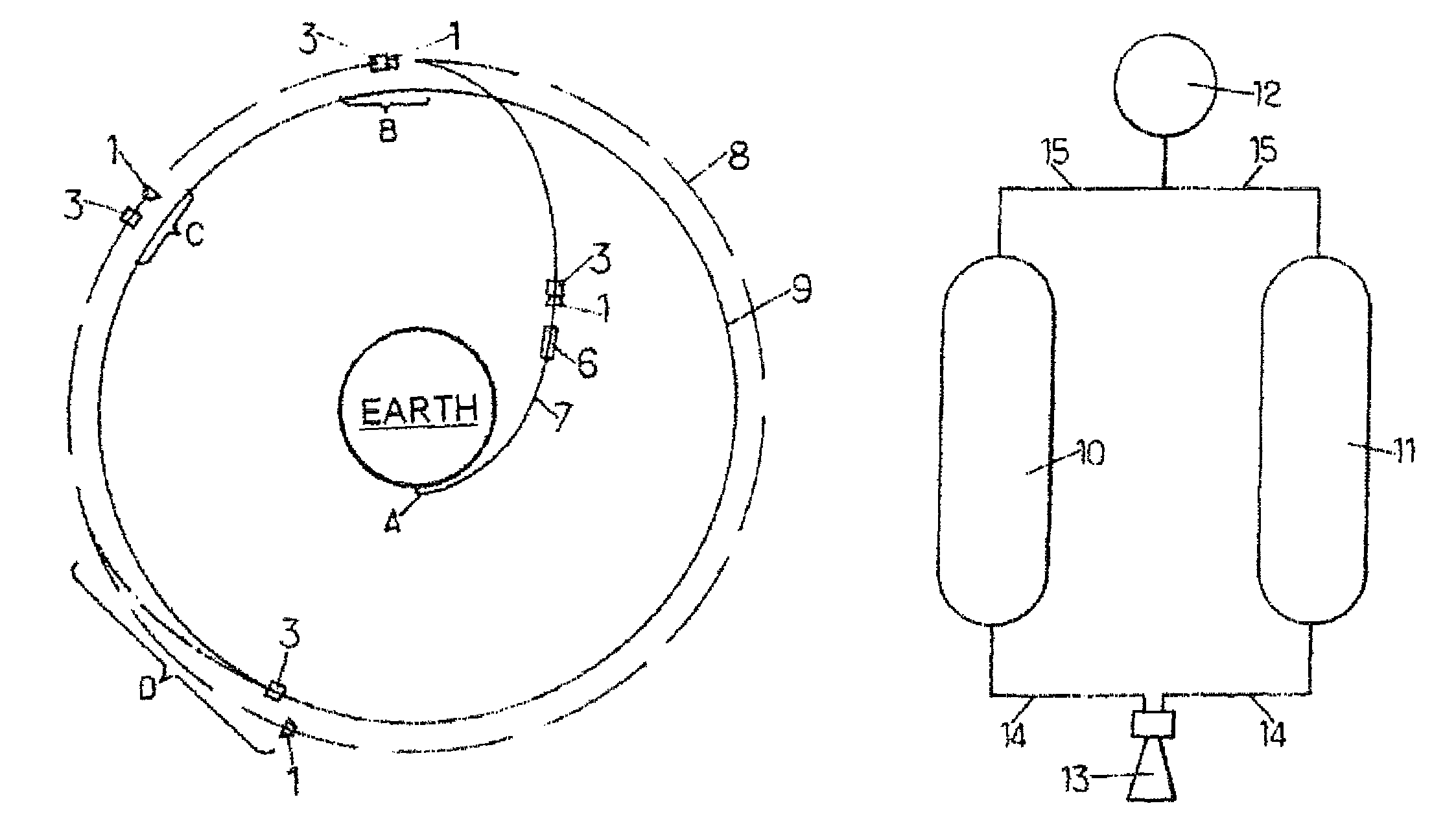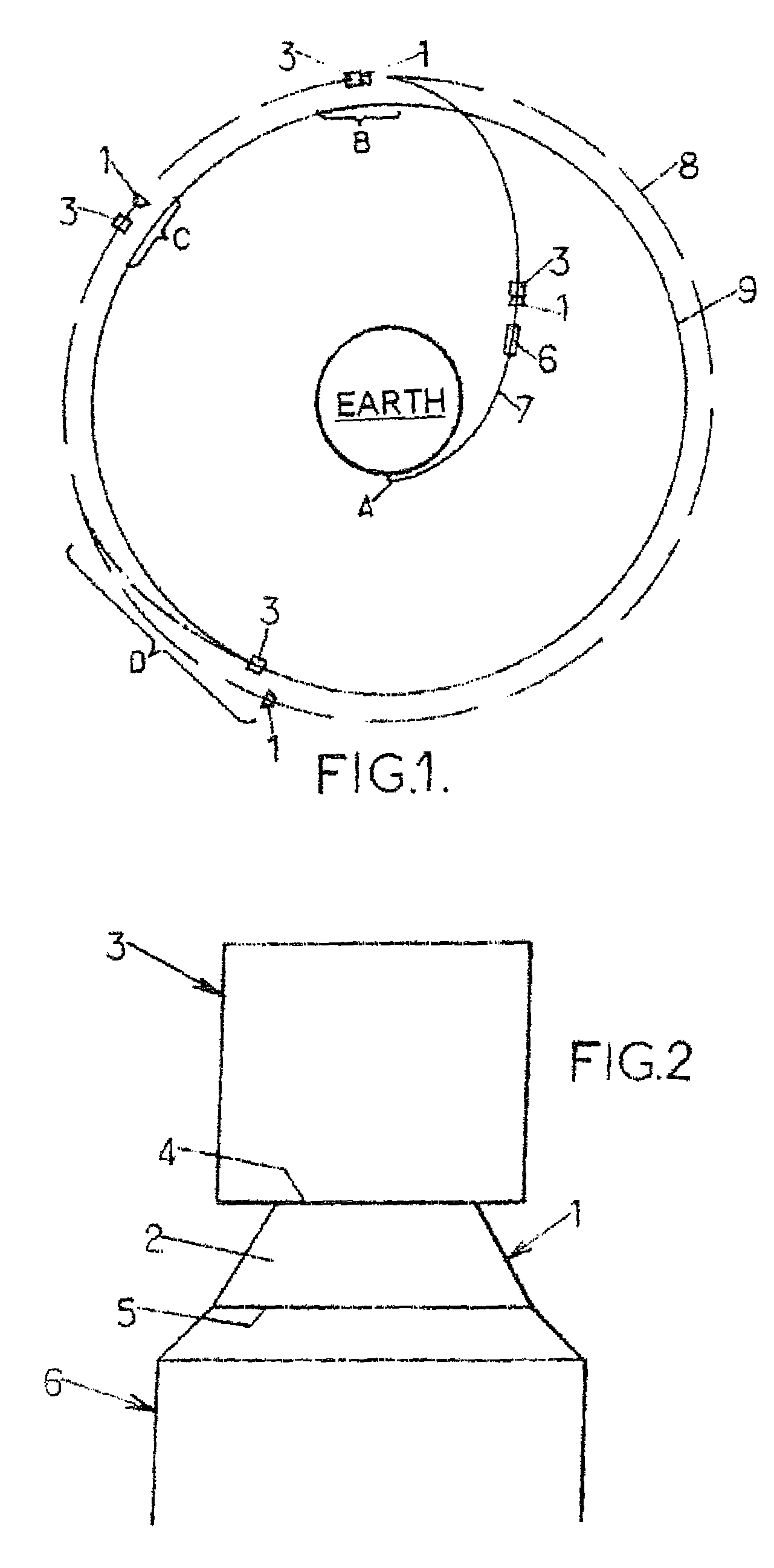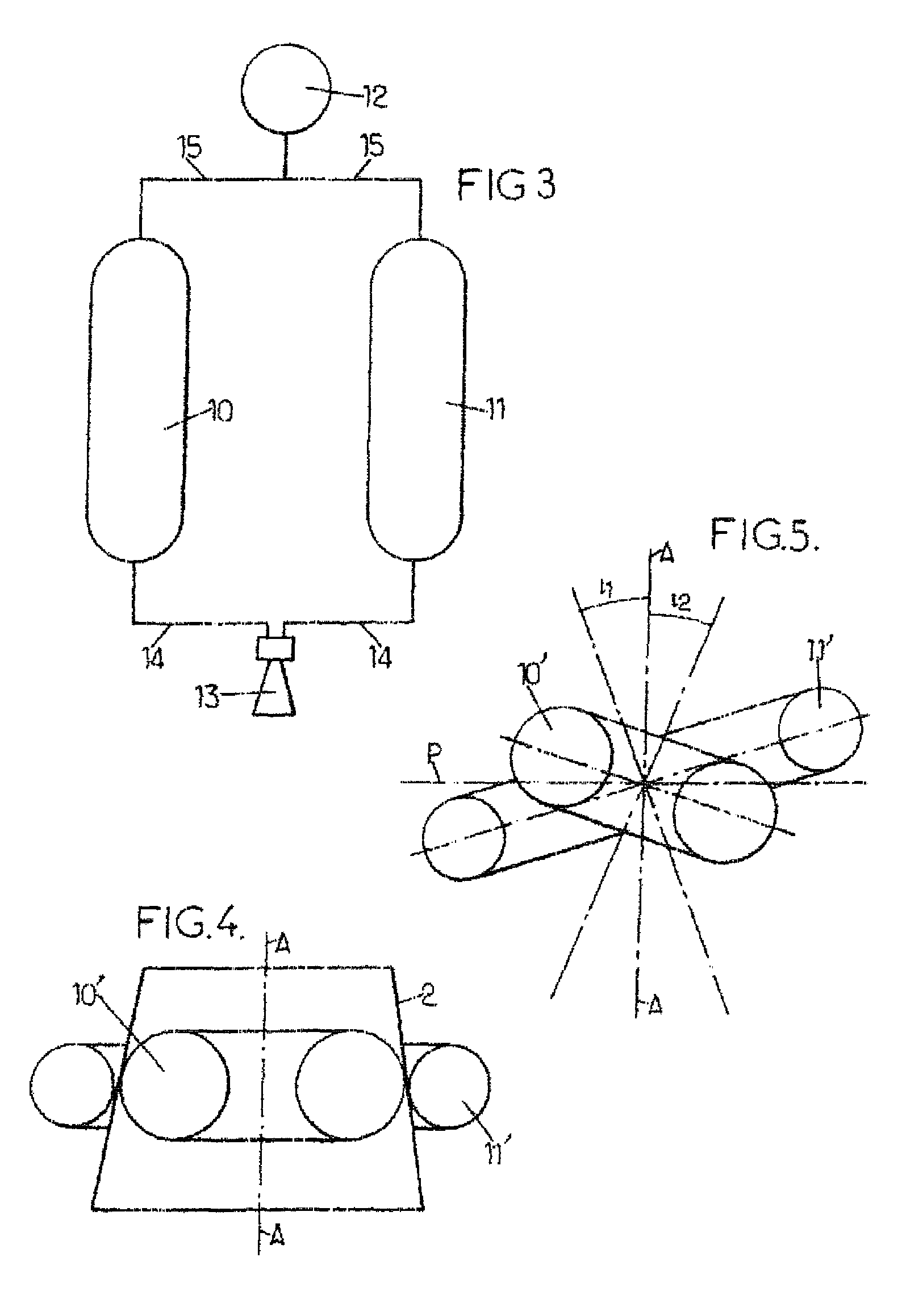Method of launching into operational orbit an artificial satellite and associated propulsion device
- Summary
- Abstract
- Description
- Claims
- Application Information
AI Technical Summary
Benefits of technology
Problems solved by technology
Method used
Image
Examples
Embodiment Construction
[0052]After the production of a propulsion device 1, arranged as a jettisonable auxiliary propulsion stage of the satellite 3 and controlled by it, through the arrangement of a conical interface adapter 2, as described below with reference to FIGS. 3 to 5, the satellite 3, equipped with its own propulsion system, is separably fixed, by a releasable coupling mechanism, to the small basis 4 (in the upper position) of the adapter 2, itself separably fixed, by its large basis 5, by another releasable coupling, to the upper end of the last stage (or upper stage) of a space launcher 6.
[0053]At the end of the first propelled phase carried out by the launcher 6, at point A in FIG. 1, the separation occurs, at the large basis 5 of the adapter 2, of the assembly made up of the satellite 3 and the propulsion device 1, on the one hand, and the upper stage of the launcher 6, on the other hand, after the injection by the launcher 6 of the satellite 3-propulsion device 1 assembly into an elliptica...
PUM
 Login to View More
Login to View More Abstract
Description
Claims
Application Information
 Login to View More
Login to View More - R&D
- Intellectual Property
- Life Sciences
- Materials
- Tech Scout
- Unparalleled Data Quality
- Higher Quality Content
- 60% Fewer Hallucinations
Browse by: Latest US Patents, China's latest patents, Technical Efficacy Thesaurus, Application Domain, Technology Topic, Popular Technical Reports.
© 2025 PatSnap. All rights reserved.Legal|Privacy policy|Modern Slavery Act Transparency Statement|Sitemap|About US| Contact US: help@patsnap.com



